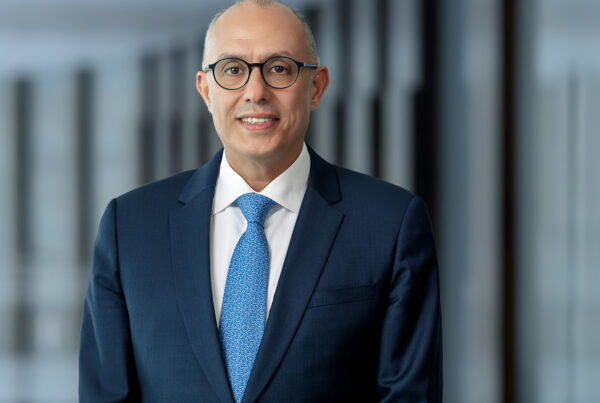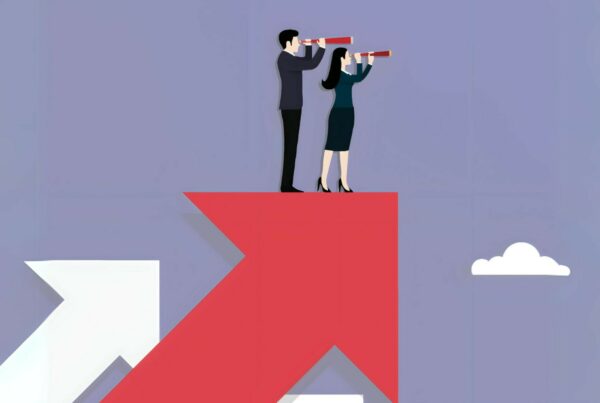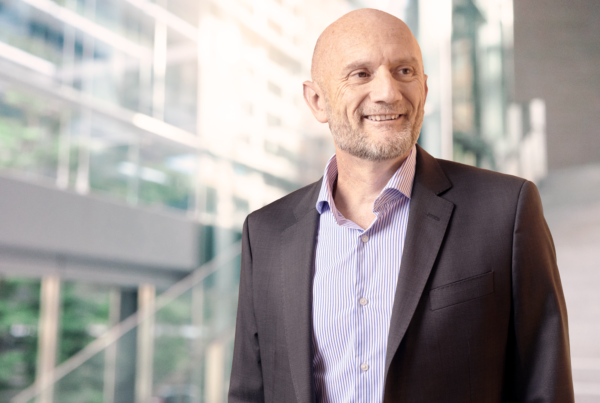In today’s business world, “breakthroughs” are ubiquitous. Click To Tweet They’ve become synonymous with any perceived improvement or marginal advancement, from more powerful laundry detergent to longer-lasting batteries.
Those of us who have experienced genuine breakthroughs that change the course of a company and industry know the true meaning of the word.
As pioneers in the field of generating business breakthroughs for more than 30 years, Insigniam defines a breakthrough as a specific, measurable result, outcome or performance that is unprecedented or unlikely given an organization’s history, resources and the environment in which it is operating.
Whether focused on process, project deliverables, strategy or culture, breakthrough results fundamentally alter what is possible: They open up new opportunities for the company’s future. True breakthroughs are not just one-hit wonders. They are sustainable, meaning they deliver results without sacrificing quality, integrity or well-being. They are the product of people thinking in new ways and acting differently, thereby opening and executing on a new field of opportunity.
Reveal the Drift
Many C-suite executives recognize when a transformation is needed within their enterprise—they see growth lagging, disruptions on the horizon and the dangers of business as usual. But where to begin? How can they intervene and alter their laggard growth?
The first step is to identify and confront the organizational “drift,” which is the almost certain future for performance given the confluence of the enterprise’s standard approaches, institutional dynamics and embedded belief systems with the external environment within which the organization operates. This drift will move outcomes in a certain, predictable direction; to misquote Adam Smith, it is the “invisible hand” of the enterprise.
To illustrate the power of the drift, imagine walking alongside a flowing river. When you look down into the water, you see the ebbs and flows of the current. You can see how quickly or slowly the water is moving, where it came from and where it’s going. If you were to pick up a twig and throw it into the river, you could predict where that twig would wind up, and where the “drift” of the river wouldn’t allow it to go. Similarly, we can examine the drifts within enterprises that determine mindset, behaviors, actions and measurable business results.
Many C-suite executives recognize when a transformation is needed within their enterprise—they see growth lagging, disruptions on the horizon and the dangers of business as usual. But where to begin?
What momentum and direction does the organization have? At what rate is productivity increasing or even declining? How has the organization historically handled challenges, planning and execution? What internal conditions (process, people, technology, etc.) or external conditions (financial, political, social) is it operating in? Answers to all of these questions are indicative of the drift and predictable outcome set of your enterprise.
It’s important to note that inaction and the wrong action are part of the drift and are a common and dangerous part of the current in an enterprise. In a 2002 Harvard Business Review article detailing a 10-year study of managers in major corporations, Heike Bruch and Sumantra Ghoshal wrote, “Our findings on managerial behavior should frighten you: Fully 90 percent of managers squander their time in all sorts of ineffective activities. In other words, a mere 10 percent of managers spend their time in a committed, purposeful and reflective manner.” Translation: 90 percent of managers and organizations polled were being swept away by their own corporate drifts.
Senior executives often tell us that one of their biggest frustrations with human performance is their inability to mobilize their people around the future that they themselves see as possible. They have a hard time getting their workforce to buy in and embrace building a new and potent future course of performance for the enterprise. All too often, “resistance to change” is used to explain this inaction, when in reality, they’re all just caught in the drift.
Unhook From the Past
Just as organizations must examine the internal and external conditions holding them back, so too must they look at the past-based misconceptions that discolor present reality and ultimately thwart breakthroughs.
This process of “unhooking” individuals from prevailing conversations—the second step toward a breakthrough—may happen via individual conversations or working sessions. During this you may discover that while the fact communicated was “the competitor got to market first,” the interpretation of the team might be that “we will never be market leaders, it’s too late.” Or, you said “we need to deliver that bold, aggressive goal to stay competitive,” but what the organization heard was “we are just being manipulated to work harder.” The ultimate goal is to break down the preset limitations in the minds of the workforce so they see it’s possible to set improbable goals along with real ways to reach them.

A well-known example of breaking down the old ways of thinking to spur a breakthrough took place during one of our consultants’ early enterprise-wide transformation engagements—at Ford Motor Co. in the mid-1980s. As competition from Japanese automakers intensified, Ford’s Chairman and CEO Donald Petersen came to realize that Henry Ford’s corporate culture had become a liability—it was no longer fueling success. So Petersen decided to reinvent the company’s mindset.
To illuminate possible ways forward, Petersen and his team began a series of conversations with executives, managers and line employees. Many of those interviewed talked about “The Job” and “Job One,” terms for the most urgent priority. When a plant manager was asked what Ford’s No. 1 job was, he replied it was getting cars out of the factory. This answer was echoed repeatedly in one form or another throughout Ford’s headquarters. However, when Ford COO Harold Poling was asked the same question, he exuberantly replied, “Quality is job one.”
With this transformational statement by a leader willing to take a stand, creating a new context for the enterprise, the company—including those on the factory floor—adopted a new mindset and a new slogan: “At Ford, Quality Is Job One.” This mantra represented what Ford wanted to be as an organization and triggered a domino effect throughout the company that ultimately helped reverse sluggish sales and declining reputation, and led to record profits.
The bottom line is that leaders who generate breakthroughs have a willingness to be unreasonable—meaning operate outside of the current, agreed-upon rules and constraints. They can and will commit to a bold vision even when unsure about how to achieve it. But they also have the wisdom to know that work must be done to free their people from entrenched, limiting beliefs before they can truly embrace a new worldview. The biggest mistake would be to try to deny or overcome the current drift and thinking with lots of “rah, rah” hype or (worse yet) command-and-control dictates. Transformational leaders take aspirations that defy current reason and logic and have compassion for and do the hard work to authentically engage their constituencies.
Once the past is broken down, the third step is to invent a new set of conversations and create an inspiring context for the accomplishment you want to achieve. This accomplishment may come in the form of a new product, reimagined organizational design or a new way of thinking; it allows people to commit while risking failure. Though it’s useful to minimize the risk of failure, the pursuit of a breakthrough result by definition always involves risk. A wariness of risk often prevents companies from initiating and committing to a breakthrough goal in the first place.
Lead and Execute By Starting in the Future
Ultimately, executing a breakthrough requires us to reverse the normal way of thinking, which views the future as a product of the past. Step four in the breakthrough process focuses on implementation by defining the accomplishment and planning backward from there.
Consider this well-known parable:
A traveler was walking down the road when he encountered two people seemingly engaged in the exact same type of activity. Both were in front of large blocks of stone, both equipped with the same tools. However, the traveler was struck by the distinct difference by which the two men were conducting their work. The first man was moving at a fairly normal pace, chipping away at his stone block. The second man was whistling, periodically looking at his work contemplatively and moving quickly with a spring in his step.
The traveler stopped the first man and asked, “What are you doing, sir?” The first man replied, “I’m cutting stone.”
The traveler then approached the second man, asking, “And what are you doing, sir?” The second man proudly replied, “I’m building a cathedral.”
The message: People naturally take exceptional action to produce unprecedented results when they see they are building something worthy of their personal commitment. Do your people think they’re cutting stone, or building a cathedral?
The future sets the context that decides what the people of an enterprise see as possible or impossible; it determines people’s thinking, actions and behaviors. Like the “cathedral” in the parable, the future is decisive; it sets a horizon that calls people into action. The demands of the future can elicit new and often unfamiliar behaviors and innovative approaches to the business at hand. 
In actual enterprises, what is the future that we are talking about? It is the bold aspirations and the driving intent that gives meaning to each individual, team and group’s work. What sets the context for an enterprise? The context is created by a network of conversations. This is the non-physical environment of ideas, unwritten rules, expectations and beliefs that shape perceptions and perspectives of each employee, team and group.
It exists in the content of your meetings, the conversations as people work, the work that managers pay attention to and the work they don’t call to attention, the problems that defy resolution, the taboos and what people think they really need to do to succeed. It can be found in gossip, jokes and banter. It manifests itself in the levels of accountability, collaboration and innovation that your enterprise can foster.
Developing an enterprise with a potent future as a guiding context is not merely an act of writing vision statements and unveiling multimedia presentations at off-site meetings held in interesting venues. It takes a leader who appreciates that the power of an enterprise is not merely in its capital and in its transactions, that galvanizing the Human Factor® is not a matter of rewards and consequences or the job of human resource systems. It is the type of leadership that is willing to invest in intentional workforce development, that understands talk is not cheap, that in fact, talk is the “coin of the realm.” This mode of leadership has the interest and discipline to master the types of conversations that build and inspire an enterprise.
Perhaps the most critical question to ask yourself is: If an observer were looking at your organization, what type of action would he or she see? If you aren’t mobilizing your workforce around a powerful picture of the future, then you’re settling for the status quo. And you’re ceding the future to competitors committed to achieving breakthrough performance.






